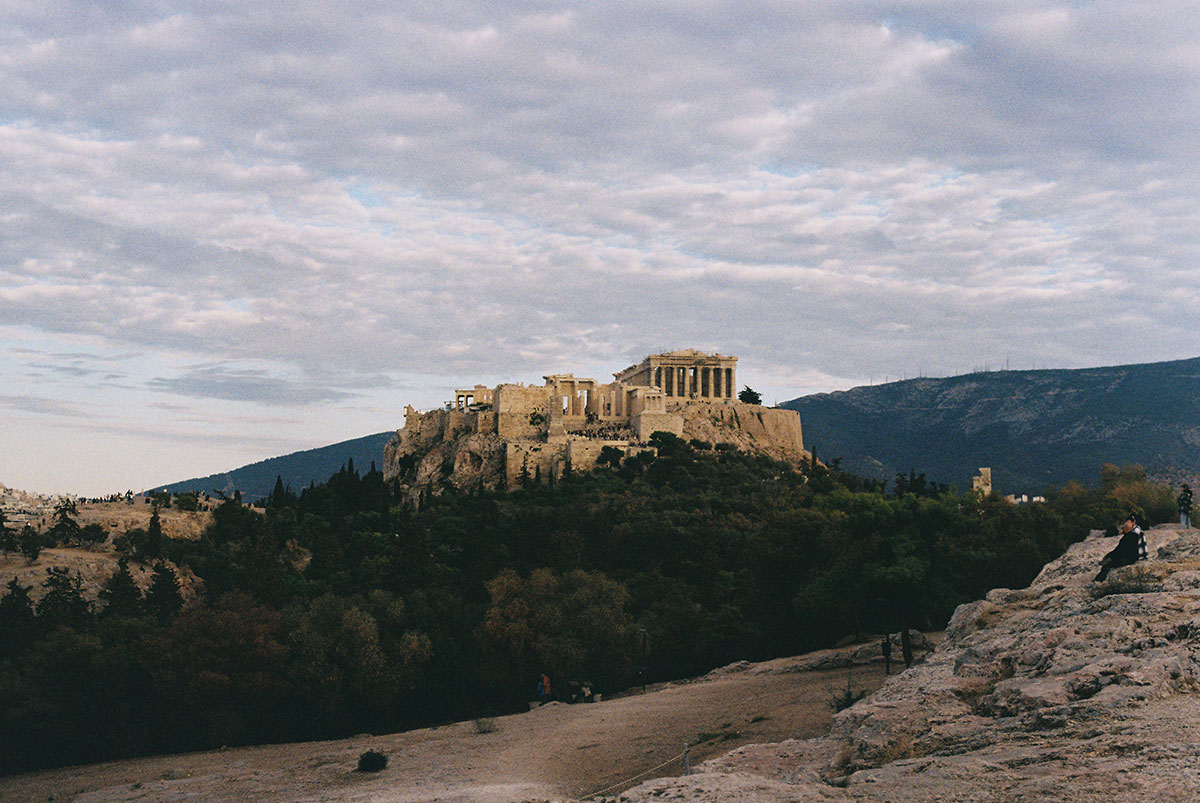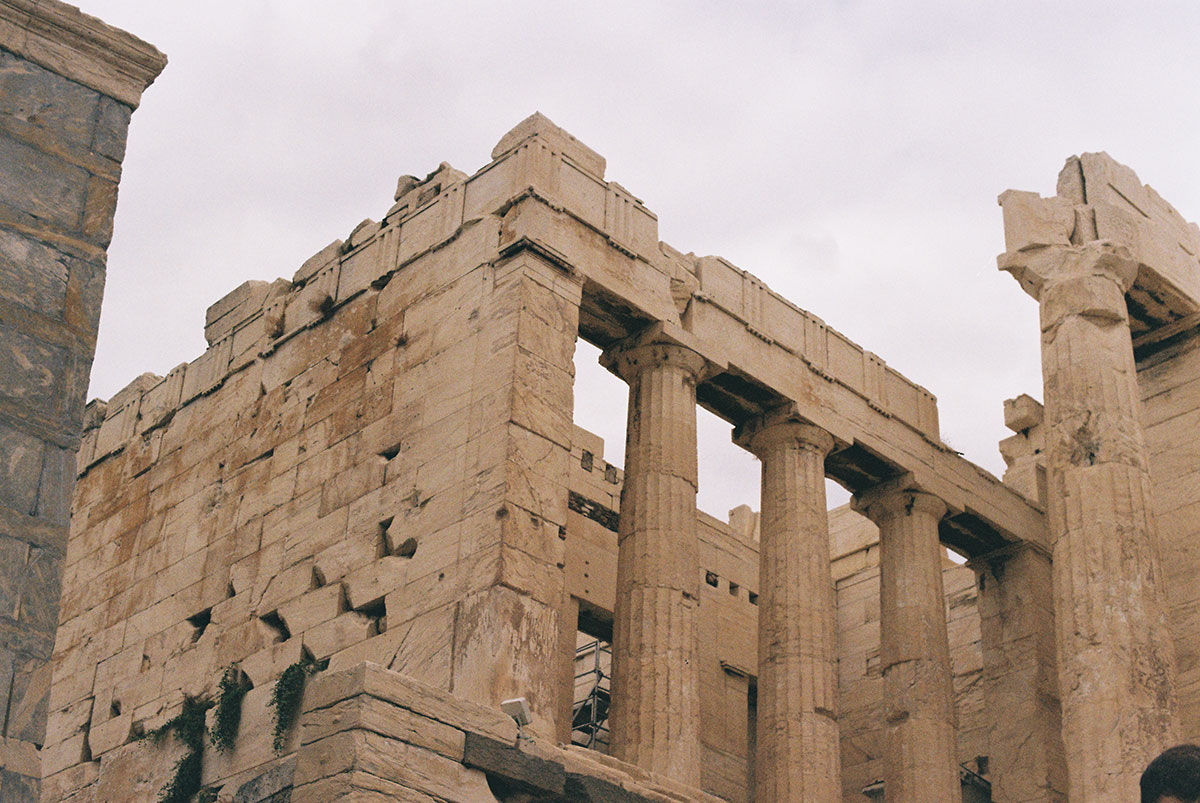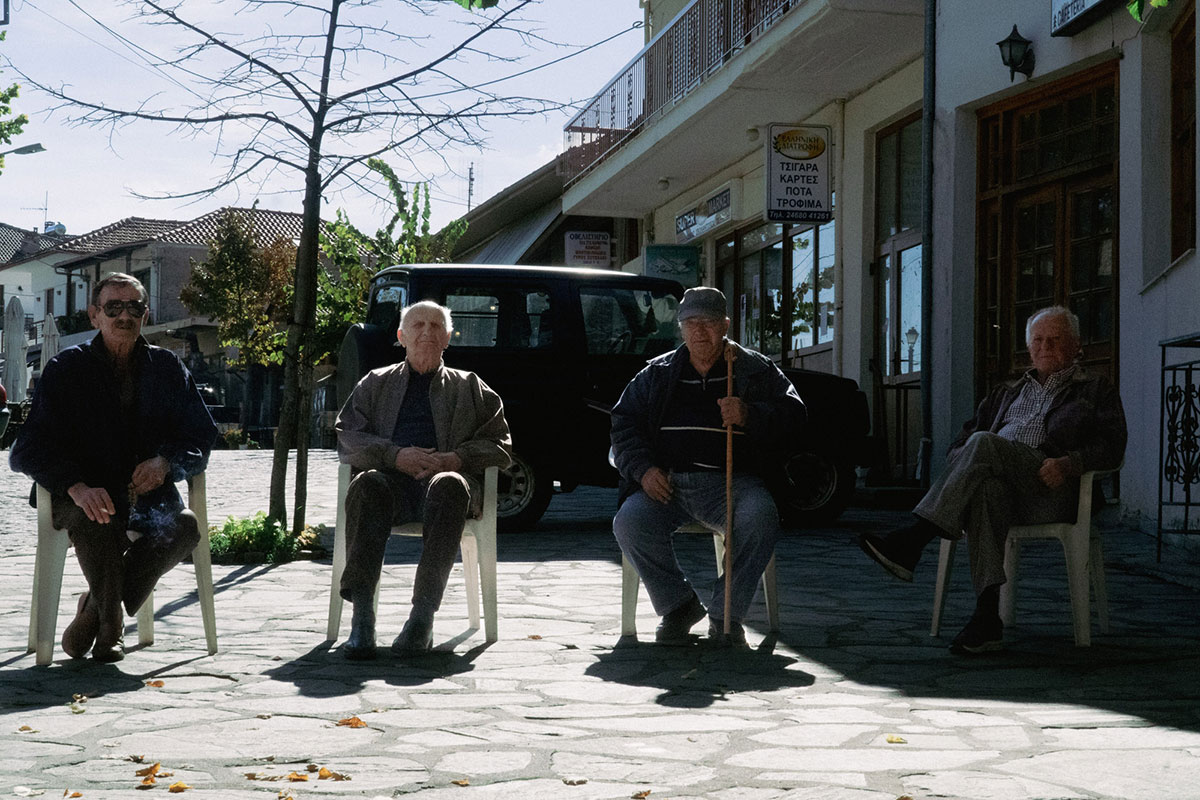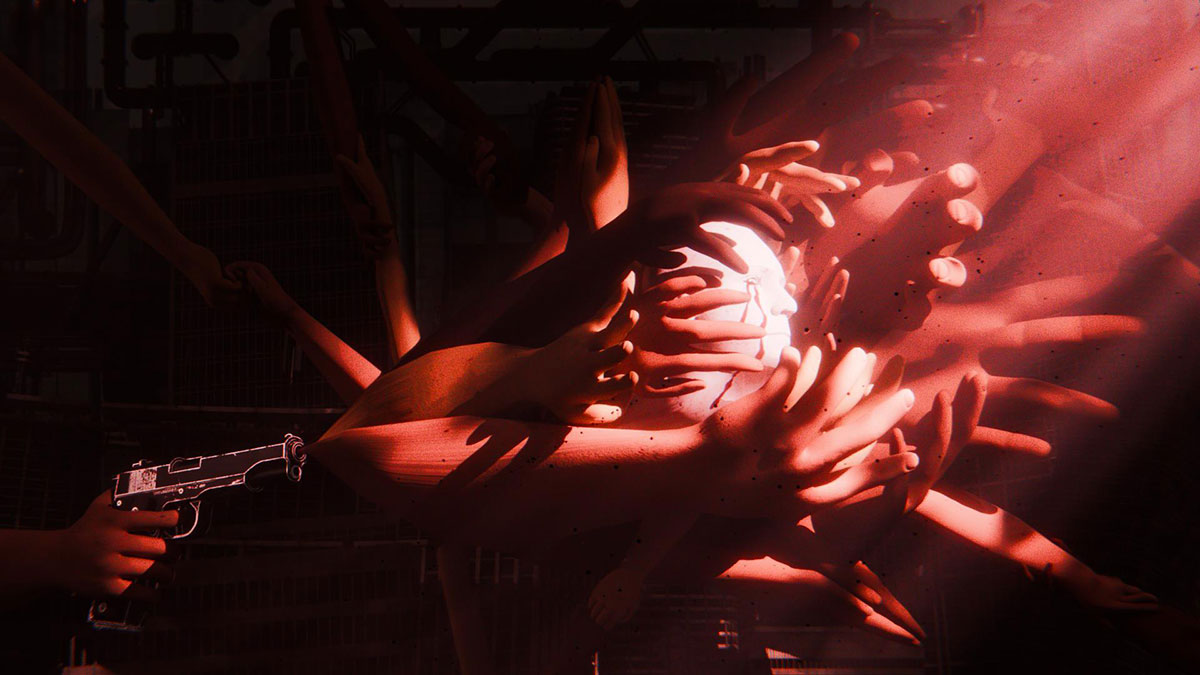These photos, taken in Athens and Pentalofos, Greece, are part of an international project between UVU Digital Media, UVU Architecture, the National Technical University of Athens, and the Ephorate of Antiquities of Athens. Our goal was to study Greece’s architectural styles and document the endangered craft of stone masonry in Western Macedonia, a tradition dating back to the 7th century.
Rather than simply preserve the past, we aimed to celebrate it. The homes in Pentalofos, built by master stonemasons, carry stories in every stone. Through our work, we hope to keep those stories alive and inspire others to see the beauty in what still remains.
All three were shot on a Sony ILCE-6400 with an 18-105mm F4 G OSS lens.

Still Standing, Still Stubborn: The Acropolis Watches All
This was taken off the path from the Acropolis, which translates to "high city," it stands over the city of Athens as a monument created in an era long since passed. You can see where people enter and how the Parthenon is filled with scaffolding from the ongoing effort to preserve the structure.

Details in the Dust: The Parthenon Up Close
Snapped just before entering the Parthenon, right before I was scolded for using a lens that—apparently—looked suspiciously professional. If you look closely, you'll notice the subtle color variations in the marble. These are intentional; preservationists use stone sourced from local quarries to reinforce the structure while preserving its historical authenticity, a quiet tribute to the craftsmanship that's kept it standing for over 2,500 years.

Elders of Olympus
A few of Pentalofos' finest (lovingly dubbed our “seasoned gentlemen”) posed proudly after shouting “Pentalofos!” at us from the town square. They had gathered to watch us fly drones over the village, cheering us on every time we managed to land without incident.
Gun violence has always been a heated topic in the US political and economic landscape due to the permit of use from the Second Amendment, yet also hinders the safety of the country. The United States promised a land full of opportunity and wealth for all, yet no one really talked about how dangerous it would be to live here because of rampant gun ownership. According to Michael A. Bellesîles (1996), “The FBI (Fédérai Bureau of Investigation) estimates that there are 250 million firearms in private hands; an additional 5 million are purchased every year.”1 And according to the United States Census Bureau: In 1996, the rough population of the US was around 269.7 million people—roughly 1 gun per person! This topic has always been something I care about because of how much it affected my life, everyone’s lives, and their future.
Gun violence has always been a heated topic in the US political and economic landscape due to the permit of use from the Second Amendment, yet also hinders the safety of the country. The United States promised a land full of opportunity and wealth for all, yet no one really talked about how dangerous it would be to live here because of rampant gun ownership. According to Michael A. Bellesîles (1996), “The FBI (Fédérai Bureau of Investigation) estimates that there are 250 million firearms in private hands; an additional 5 million are purchased every year.”1 And according to the United States Census Bureau: In 1996, the rough population of the US was around 269.7 million people—roughly 1 gun per person! This topic has always been something I care about because of how much it affected my life, everyone’s lives, and their future.
For the work itself, I decided to experiment a little and create a 3-D art piece using Blender as my tool.
I’ll explain my whole process and why I designed things the way I did. I had 2 ideas at first, my original idea was to have a close-up of a gun and have the same style of hands going out from its body. The second idea, which I followed, was to have a gun firing hands from it. The gun I used is modeled after the M1911, which is “the standard-issue sidearm for the United States Armed Forces from 1911 to 1985. It was widely used in World War I, World War II, the Korean War, and the Vietnam War.”2 Due to its small and compact size and its relevance during wartime, which fits the proportion of the art piece, I decided to use it. The gun shoots out an array of hand poses that have different color skins, symbolizing the multitude of lives lost and the anguished souls of those who fell victim no matter their status, race, origin, etc. People mourn for the death of their loved ones, they cry, but bloodied tears.
Some wish for revenge, some wish for justice, and others wish to stay silent, that “neutral white,” as their voice is drowned out by the shots of oppressive firearms.
Yet in the cries of tribulation, there exist those who wish to change it. Fell victim to the violence of gunshots or to the ever-mourning cycle of lost loved ones, they wish to suppress guns and reform the government. They pray, they plan, they peacefully protest, and they come together to make a change. But despite all of their efforts, their voices are once again drowned out by the masses that benefit from the usage and possession of firearms, which I depicted by the hands holding each other in the background although hidden by the shadows of the tormented. They try their best but to no avail as the use of firearms has long since been legal under the Second Amendment.
Despite all of the technological and societal advancement the US has undergone, nothing has changed. Guns are still being fired. People are still dying. Lives are still being lost. To reform is to change the foundation of the government, which is monumentally difficult for those with little power in the political landscape. But no matter how powerless they are, they can incite change and stir up the whole lake with violence and a gun.
